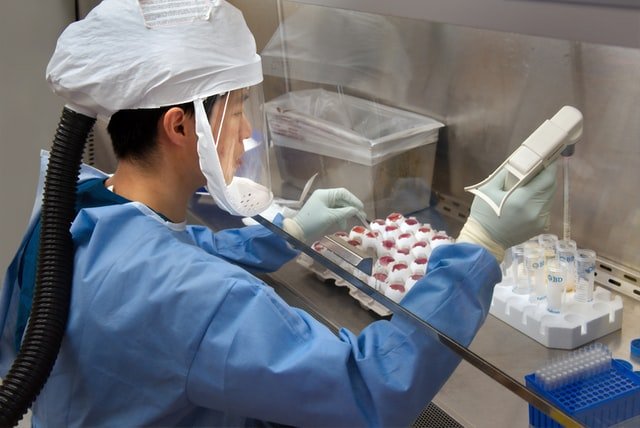Oral and Oropharyngeal Cancer
- Biotexus
- November 12, 2024
Understanding Oral and Oropharyngeal Cancer: Causes, Risks, and Treatments
Oral and oropharyngeal cancers are serious conditions affecting various parts of the mouth and throat. Together, they account for a significant portion of head and neck cancers, with squamous cell carcinoma being the most prevalent type. These cancers originate in the flat cells that line the mouth and throat and can impact areas such as the lips, gums, tongue, tonsils, and the base of the throat.
Anatomy : Where Oral and Oropharyngeal Cancers Develop
The oral cavity includes the
- Lips
- Buccal mucosa: Lining of the lips and cheeks
- Gingiva: Upper and lower gums
- Front two-thirds of the tongue
- Floor of the mouth: Beneath the tongue
- Hard palate: Roof of the mouth
- Retromolar trigone: The area behind the wisdom teeth
The Oropharynx Includes:
- Soft palate: Back of the mouth
- Pharynx: The throat behind the mouth
- Tonsils
- Base of the tongue
Key Risk Factors for Oral and Oropharyngeal Cancers
Tobacco consumption: Tobacco use, which includes cigarettes, cigars, pipes, chewing tobacco, and snuff, is the single most important risk factor for head and neck cancer. Tobacco usage is connected to 85% of all cases of head and neck cancer. Pipe smoking, in particular, has been linked to cancer in the area of the lips that comes into contact with the pipe stem. Chewing tobacco or snuff is linked to a 50% increased risk of getting cancer in the cheeks, gums, and inner surface of the lips, where tobacco has the most contact.
Alcohol: Frequent and excessive alcohol drinking raises the risk of head and neck cancer. The combination of alcohol and smoke increases this risk even further.
Other factors that can raise a person’s risk of developing oral or oropharyngeal cancer include:
Prolonged exposure to the sun: High sun exposure without sun protection measures has been associated with lip cancer. Reduce your exposure to sunshine and other sources of ultraviolet (UV) radiation to lower your chance of developing lip cancer.
Human papillomavirus (HPV): According to research, HPV infection is a risk factor for oropharyngeal cancer. HPV-related oropharyngeal cancer in the tonsils and base of the tongue has grown more prevalent in recent years. The most typical way for someone to get HPV is through sexual activity, including oral sex, with someone who has HPV.
Gender: Men are more prone than women to acquire oral and oropharyngeal malignancies.
Fair skin: Lip cancer is more common in those with fair skin.
Poor oral hygiene: Lack of dental care and poor oral hygiene practices may raise the risk of oral cavity cancer. Poor dental health, as well as chronic discomfort from ill-fitting dentures, may contribute to an increased risk of oral and oropharyngeal cancer, particularly in persons who use alcohol and tobacco products. Regular exams by a dentist or dental hygienist can aid in the early detection of oral cavity cancer and certain oropharyngeal malignancies.
Poor diet/nutrition: A diet lacking in fruits and vegetables, as well as a lack of vitamin A, may raise the risk of oral and oropharyngeal cancer. Chewing betel nuts, a moderate stimulant-containing nut common in Asia, increases a person’s chance of getting oral and oropharyngeal cancer.
Weakened immune system: People who have a weaker immune system are more likely to acquire oral and oropharyngeal cancer.
Marijuana consumption: According to recent research, marijuana users may have a higher-than-average risk of developing head and neck cancer.
Symptoms and Diagnosis
Early detection is key. Symptoms include persistent sores in the mouth, difficulty swallowing, unexplained weight loss, and chronic hoarseness. Diagnosis typically involves a biopsy, imaging studies (like CT or MRI scans), and HPV testing in relevant cases.
Treatment Options
Surgery
During a surgery, the tumor and some surrounding healthy tissue, known as a margin, are removed. The total excision of the tumor with “negative margins” is an essential objective of the operation. Negative margins indicate that there is no sign of cancer in the healthy tissue of the margin. In the operating room, surgeons can typically identify if the tumor has been completely removed.
The following are the most frequent surgical methods used to remove oral or oropharyngeal cancer:
Primary tumor removal: The tumor and a margin of healthy tissue surrounding it are removed to reduce the possibility of malignant cells remaining. The tumor might be removed through the mouth or by a neck incision. A mandibulotomy, which involves splitting the jawbone to provide the surgeon access to the tumor, may also be necessary.
Glossectomy: The tongue is partially or completely removed in this procedure.
Mandibulectomy : If the tumor has penetrated a jawbone but has not spread, a portion of the jawbone or the entire jawbone will be removed. If an x-ray shows indications of jawbone deterioration, the entire bone may need to be removed.
Laryngectomy: A laryngectomy is the surgical removal of the larynx or voice box. Although the larynx is crucial for sound production, it is also vital for swallowing because it protects the airway from food and fluids entering the trachea or windpipe and reaching the lungs, where it can cause pneumonia. A laryngectomy is seldom required to treat oropharyngeal or oral cancer.
Transoral robotic surgery and transoral laser microsurgery: Minimally invasive surgical treatments include transoral robotic surgery (TORS) and transoral laser microsurgery (TLM). This implies that they do not need to make huge incisions to reach and remove a tumor.
Other types of surgery may also be needed, including:
Micrographic surgery: This form of surgery is routinely used to treat skin cancer and is occasionally used to treat cancers of the mouth cavity. It has the potential to lessen the quantity of good tissue removed. This method is frequently used to treat lip cancer. It entails removing the visible tumor as well as tiny bits of adjacent tissue. Each little particle is inspected under a microscope until the malignancy is gone.
Tracheostomy : A hole is cut in the neck if cancer is obstructing the airway or is too big to be entirely removed. This is known as a tracheostomy. A tracheostomy tube is subsequently inserted, and the patient breathes via it. Tracheostomies can be either temporary or permanent.
Gastrostomy tube: If cancer stops a person from swallowing, a feeding tube known as a gastrostomy tube is implanted. The tube is inserted straight into the stomach via the skin and muscle of the abdomen. These tubes may be used as a temporary means of feeding until the person is able to properly and adequately swallow food brought in via the mouth.
Reconstruction: If extensive sections of tissue must be removed as part of the therapy, reconstructive surgery may be required to assist the patient swallow and talk again. Healthy bone or tissue from other regions of the body may be extracted to repair gaps caused by the tumor or to replace a portion of the lip, tongue, palate, or jaw.
Radiation therapy
Radiation treatment with external beams: This is the most often used kind of radiation therapy for oral or oropharyngeal cancer. A radiation beam created by a machine outside the body is directed towards the tumor during external-beam radiation treatment. This is often performed as an outpatient procedure.
Proton treatment is a form of external-beam radiation therapy in which protons are used instead of x-rays. Protons with great energy can damage cancer cells. Another type of external-beam radiation therapy, known as intensity modulated radiation therapy (IMRT), delivers more effective doses of radiation to the tumor while causing less harm to healthy cells.
Therapies using medication
Medication-based treatments are used to kill cancer cells. Medication can be delivered through the circulation to cancer cells all throughout the body. Systemic treatment refers to the administration of a medicine in this manner. Medication can also be administered locally, which means that it is delivered directly to the malignancy or is retained in a certain portion of the body.
The types of medications used for oral and oropharyngeal cancer include:
- Chemotherapy
- Immunotherapy
- Targeted therapy
Each of these types of therapies is discussed below in more detail.
Chemotherapy
Chemotherapy is the use of medications to eradicate cancer cells, often by preventing cancer cells from growing, dividing, and proliferating.
Chemotherapy, sometimes known as neoadjuvant chemotherapy, is used as the first treatment before surgery, radiation therapy, or both. Adjuvant chemotherapy is administered following surgery, radiation treatment, or both. Chemotherapy for oral cavity cancer is typically administered as part of a clinical study.
Immunotherapy
Immunotherapy, also known as biologic treatment, is intended to increase the body’s natural defences against cancer. It employs components created by the body or in a laboratory to enhance, target, or restore immune system activity. The FDA has authorised two immunotherapy drugs: pembrolizumab (Keytruda) and nivolumab (Opdivo).
Targeted therapy
Targeted therapy is a type of cancer treatment that targets specific genes, proteins, or the tissue environment that contributes to cancer development and survival. This sort of therapy inhibits cancer cell development and spread while protecting healthy cells.
The targets of all cancers are not the same. Your doctor may do tests to determine the genes, proteins, and other variables in your tumor in order to discover the most effective treatment.
Antibodies directed against a cellular receptor known as the epidermal growth factor receptor (EGFR) are now being utilized in conjunction with radiation treatment to treat head and neck malignancies.
Prevention Tips
Different forms of cancer are caused by different circumstances. Researchers are still looking into what causes oral and oropharyngeal cancers, as well as techniques to avoid them. Although there is no established method of totally preventing this condition, you may be able to reduce your risk. Several risk factors for oral and oropharyngeal cancer can be prevented by adopting a healthy lifestyle.
Stopping the use of any tobacco products is the most critical thing someone can do to lower their risk of oral and oropharyngeal cancer, even if they have been smoking for a long time.
It is also critical to reduce your chance of HPV infection. Gardasil, an HPV vaccination, has been licensed by the US Food and Drug Administration (FDA) for the prevention of oral and oropharyngeal cancer.
Conclusion
Oral and oropharyngeal cancers are preventable and treatable if caught early. Regular screenings, especially for high-risk individuals, combined with a healthy lifestyle, can significantly reduce the risk and improve outcomes for those diagnosed.
For more information or assistance, consult your healthcare provider.



















